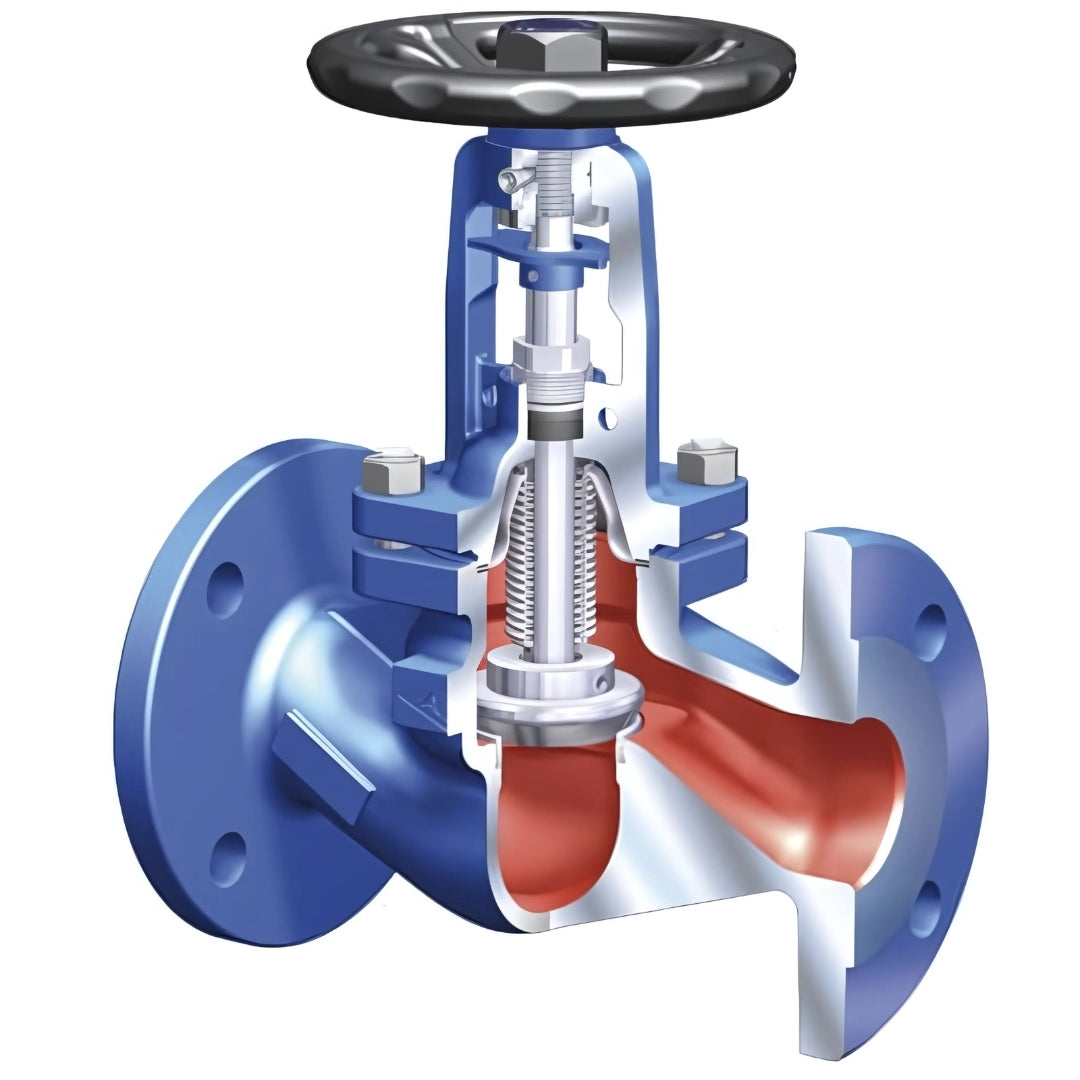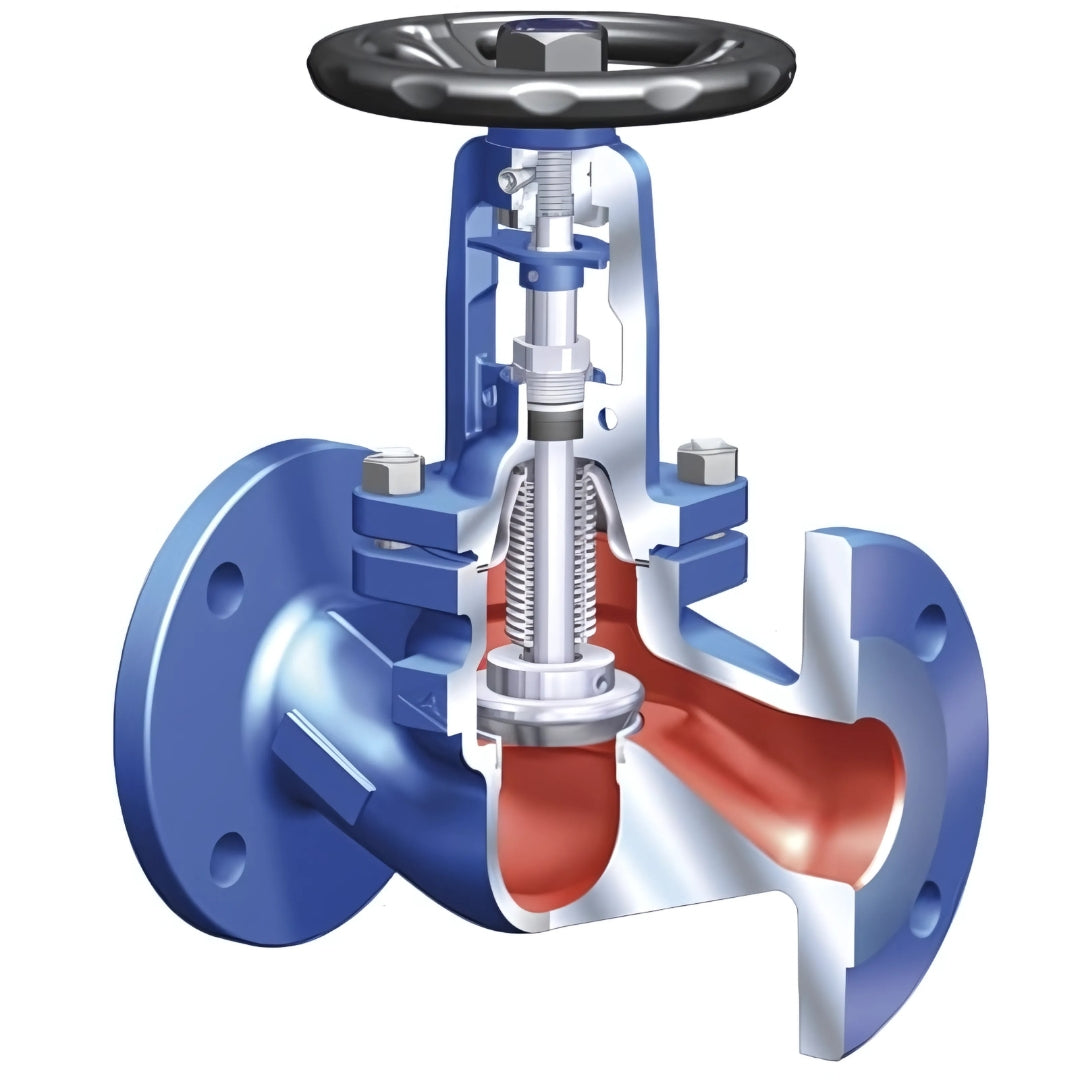Steam Valves
FABA+ Bellows Sealed Globe Valve (Flanged PN25, Nodular Iron Body)
FABA+ Bellows Sealed Globe Valve (Flanged PN25, Nodular Iron Body)
Couldn't load pickup availability
The FABA+ Bellows Sealed Globe Valve with PN25 flanged ends and a nodular cast iron body is a cost-effective yet highly reliable solution for ensuring zero stem leakage in medium-pressure steam, gas, and fluid applications. With its multi-layer stainless steel bellows seal, this valve eliminates emissions through the stem, offering a long-term sealing solution ideal for environmentally sensitive or safety-critical systems.
The nodular iron body, also known as ductile iron, combines excellent mechanical strength with improved ductility and vibration resistance, making it well-suited for thermal and pressure cycling in industrial environments. The PN25 pressure rating allows for dependable operation in heating networks, steam systems, and process pipelines operating up to 25 bar. A rising stem with integrated backseat adds redundancy to the sealing system, while the globe valve design ensures accurate throttling and dependable shut-off.
Backed by ARI Armaturen’s engineering expertise, the FABA+ valve delivers outstanding performance, serviceability, and sealing integrity in everyday industrial and utility service.
Key Features
Nodular Cast Iron Body
Strong and ductile, ideal for fluctuating pressure and thermal loads in general-purpose systems.
PN25 Flanged Connections
Suited for pipelines up to 25 bar; easy integration into standard flange-mount systems.
Bellows Sealed Stem
Zero stem leakage through multi-layer stainless steel bellows — ideal for clean steam and condensate service.
Backseat Safety Feature
Provides additional sealing when fully open, allowing safe gland packing maintenance.
Linear Globe Valve Design
Precise flow control with excellent shut-off performance and low pressure drop.
Trusted Industrial Use
Commonly used in steam plants, district heating, and process circuits handling water, oil, or gas.
Share

FAQ's
What is the difference between a valve and an actuator?
What types of actuators are available?
The main types of actuators are:
Pneumatic actuators – use compressed air for fast, reliable operation.
Electric actuators – use electrical power for precise control.
Hydraulic actuators – use fluid pressure for high-torque applications.
Each type offers unique advantages depending on the environment, media, and system control needs.
How do I choose the right actuator for my valve?
To select the correct actuator, consider:
Valve type and torque requirement
Power source available (air, electric, or hydraulic)
Operating environment (temperature, humidity, hazardous area)
Control signal type (on/off or modulating)
Matching actuator torque and compatibility with the valve’s ISO mounting ensures reliable performance.
What are the main types of valves used in automation?
The most common valves in automated systems include:
Ball valves – for tight shutoff and quick operation.
Butterfly valves – for larger flow control with compact design.
Globe valves – for precise throttling and flow regulation.
Check valves – to prevent backflow.
Gate valves – for full bore flow isolation.
What’s the difference between a double-acting and spring-return actuator?
Double-acting actuators use air (or power) to both open and close the valve.
Spring-return actuators use air to open (or close) the valve, and a built-in spring to automatically return it to a safe position when power or air is lost — ideal for fail-safe operation.
How often should valves and actuators be serviced?
Regular maintenance intervals depend on operating conditions, but a good rule of thumb is to inspect every 6–12 months.
This includes checking for leaks, lubrication, seal wear, and actuator responsiveness to prevent unexpected downtime.

